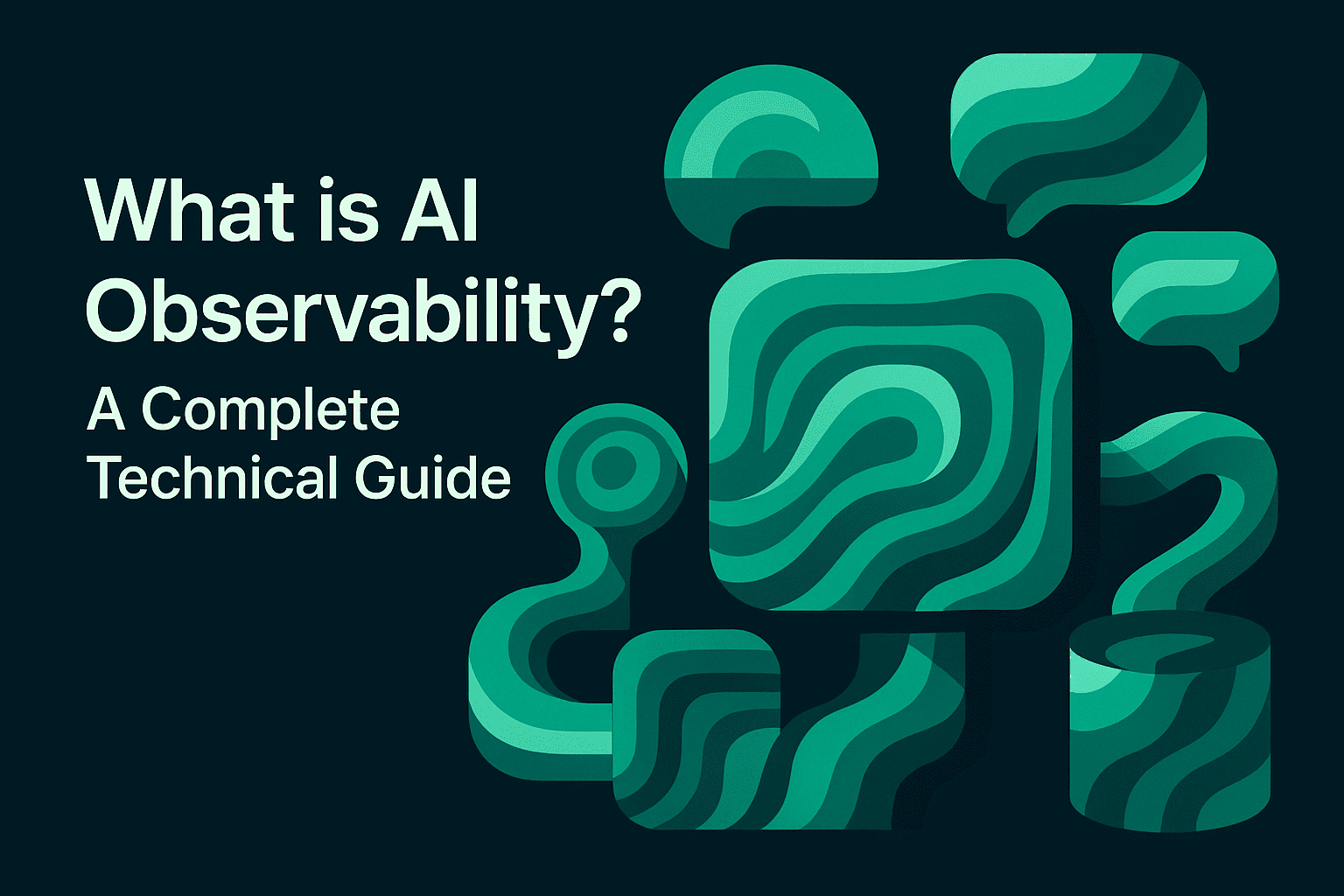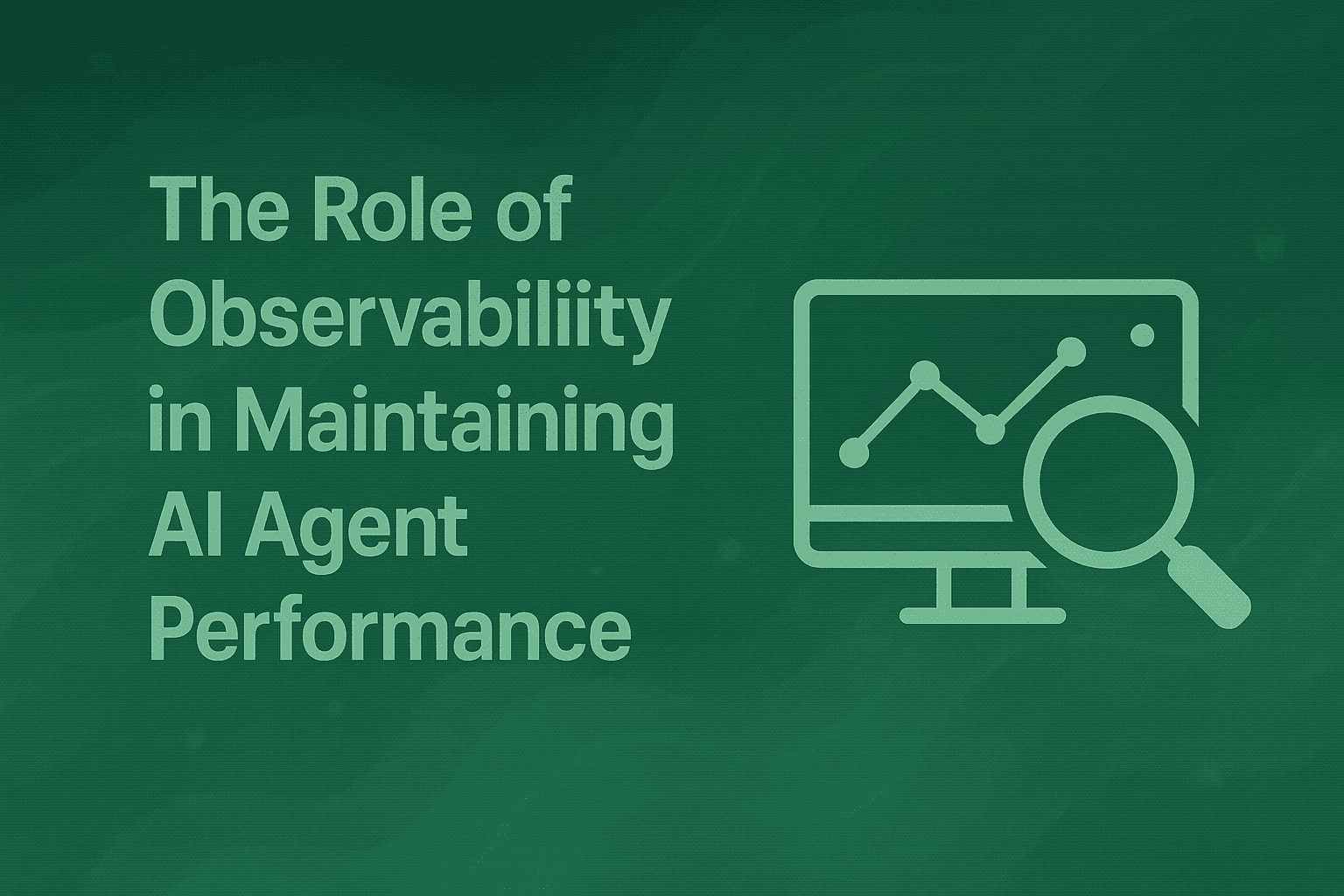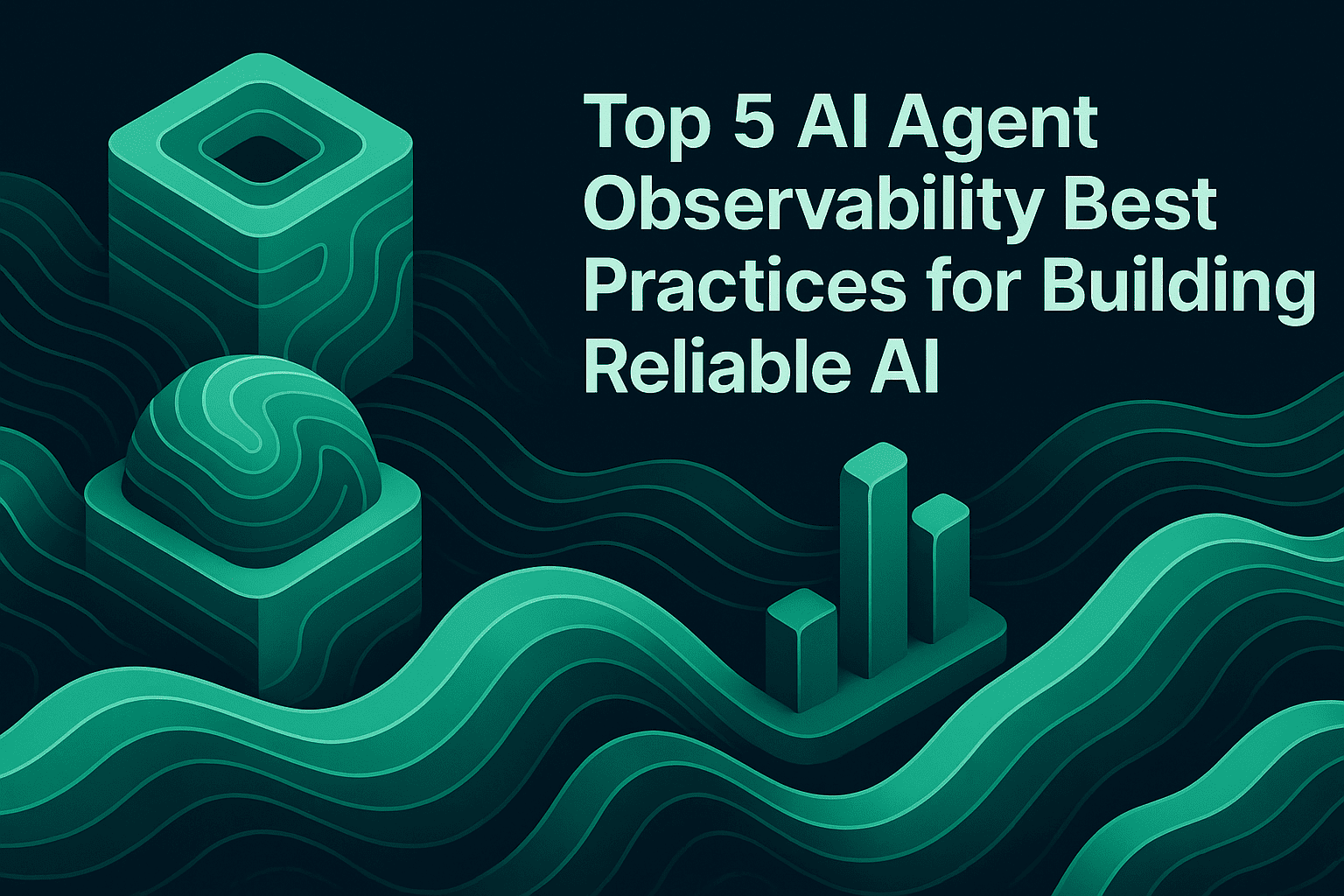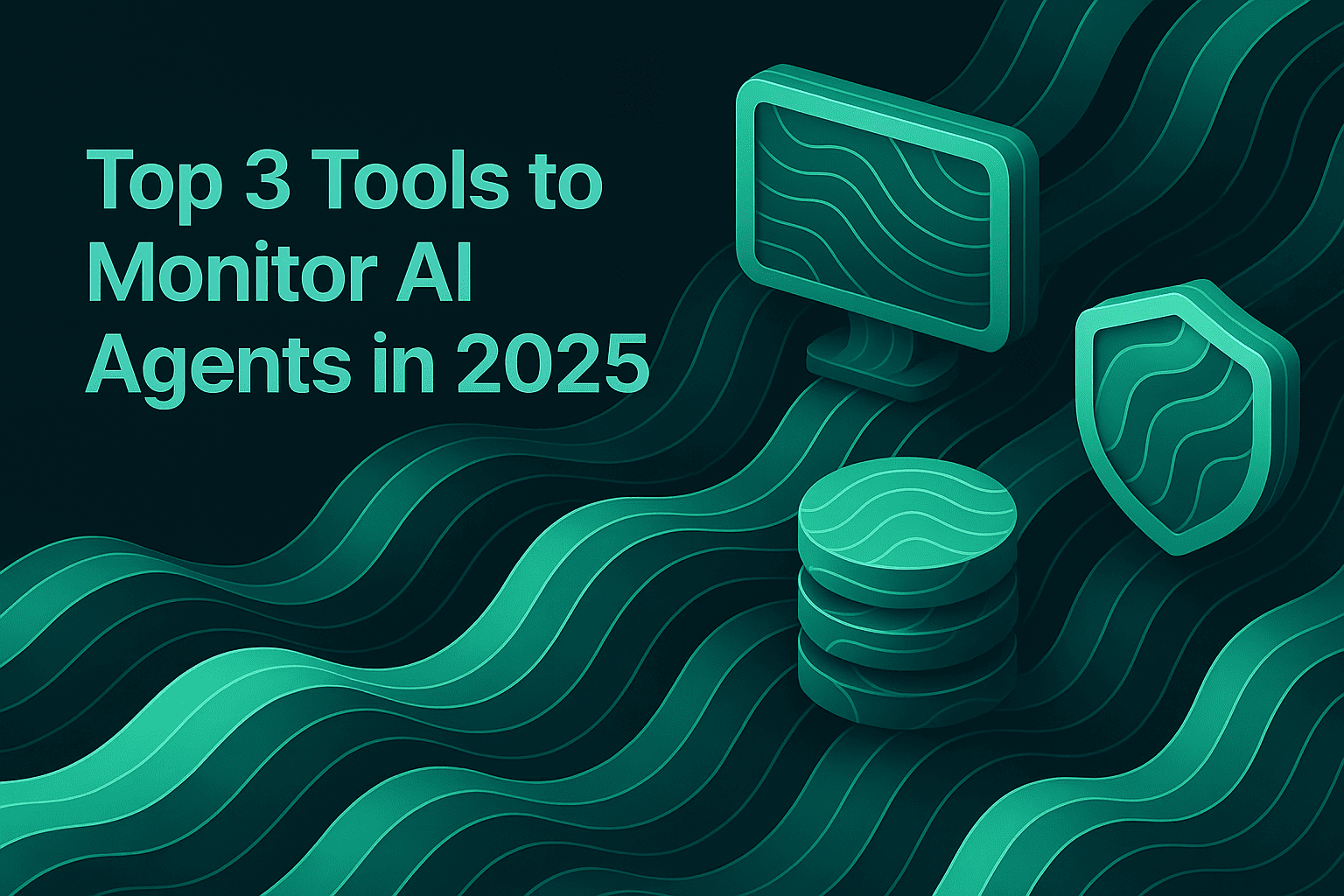What is AI Observability? A Complete Technical Guide

TLDR
AI observability is the practice of collecting, analyzing, and acting on comprehensive data signals from AI applications to understand system behavior, debug issues, and optimize performance. Unlike traditional software observability, AI observability addresses unique challenges including language model behavior, vector embeddings, multi-step agentic workflows, and non-deterministic outputs. By implementing AI observability, teams gain visibility into model quality, cost control, resource utilization, and failure modes enabling faster iteration and more reliable deployments.
What is AI Observability?
AI observability refers to the ability to measure, understand, and debug the internal states of AI systems by collecting telemetry data from all layers of an application stack. It extends the principles of traditional observability which focuses on logs, metrics, and traces to address the unique characteristics of AI-powered applications.
In technical terms, AI observability encompasses the collection and analysis of data signals that reveal how AI systems behave in real-time and under production conditions. This includes tracking language model (LLM) inputs and outputs, monitoring token usage and costs, capturing vector embeddings and retrieval augmented generation (RAG) operations, and analyzing multi-step agent interactions.
Why AI Observability is Essential
Traditional observability tools were designed for deterministic systems where the same input consistently produces the same output. AI systems operate differently. Language models produce varied outputs, retrieval systems return different results based on similarity scores, and agents make sequential decisions that create complex execution paths. Without specialized observability practices, teams struggle to understand why an AI application failed, why costs escalated unexpectedly, or why quality degraded over time.
AI observability addresses these gaps by enabling teams to:
- Debug failures systematically: Trace execution paths through multi-step agent workflows, identify where tasks failed, and pinpoint root causes across different layers of the system.
- Optimize performance and cost: Monitor token consumption, model selection decisions, and API call patterns to reduce unnecessary expenses and improve response times.
- Ensure model quality: Detect quality regressions early, measure how model updates impact downstream performance, and validate that agents behave as expected across production scenarios.
- Maintain reliability: Catch edge cases and failure modes before they impact users, respond to production incidents quickly, and maintain service level agreements.
Anatomy of AI Observability
Effective AI observability requires instrumentation across multiple layers of the application stack. Each layer presents distinct observability challenges and opportunities.
Application Layer
The application layer encompasses the business logic, user interfaces, and request handling code that orchestrates AI interactions. Observability at this layer reveals how end users interact with the system, including request patterns, latency, and error rates.
What observability helps:
- Track user requests and session flows to understand how agents behave across complete user journeys.
- Measure application-level latency and identify bottlenecks that affect user experience.
- Capture user feedback signals to correlate with agent performance metrics.
Agentic Framework Layer
Agentic frameworks define how AI agents execute multi-step tasks by orchestrating LLM calls, tool usage, and decision-making logic. This layer is critical because agents often make sequential decisions where early choices impact later outcomes. Learn more about agent evaluation and simulation to understand how to measure agent performance systematically.
What observability helps:
- Monitor agent trajectories to understand the sequence of decisions and tool calls made by agents.
- Trace how agents handle success and failure paths, including fallback strategies and retries.
- Identify when agents enter infinite loops, fail to complete tasks, or deviate from expected behavior.
- Measure task completion rates and success metrics across different agent configurations using task success evaluators.
Language Model Layer
The LLM layer is where core inference happens. This layer includes model selection, prompt execution, token accounting, and response generation. Observability here directly impacts cost management and quality assurance.
What observability helps:
- Monitor token usage and associated costs in real-time, including input tokens, output tokens, and cached tokens.
- Track model selection decisions when multiple models are available, helping teams optimize for cost or latency.
- Capture prompt variations and model parameters to correlate with output quality changes. Explore prompt versioning and prompt management capabilities to track prompt evolution systematically.
- Detect anomalies in model behavior, such as increased refusal rates or unexpected output patterns using quality evaluators.
Orchestration Layer
The orchestration layer manages how different components interact, including task scheduling, retry logic, error handling, and state management. This layer ensures that complex multi-step processes execute reliably.
What observability helps:
- Track execution order and dependencies between different components through distributed tracing.
- Monitor retry behavior and understand which operations fail consistently using error tracking.
- Measure orchestration-level latency to identify where time is spent in overall workflows.
- Capture state transitions to debug complex interactions between multiple agents or services through spans.
Retrieval and Vector Database Layer
RAG systems combine LLMs with external knowledge sources through vector embeddings and semantic search. Observability at this layer reveals the quality and relevance of retrieved information. For detailed guidance, explore how to set up retrieval tracking within your observability infrastructure.
What observability helps:
- Analyze retrieval quality using cosine embedding distance and other relevance metrics between queries and retrieved documents.
- Monitor vector database performance, including query latency and result rankings.
- Track which documents are retrieved for different queries and whether retrievals improve or degrade model outputs through context relevance and context recall evaluations.
- Debug cases where relevant information exists but wasn't retrieved, helping teams improve indexing strategies.
Benefits of AI Observability
Improve Cost Control and Model Management
AI applications incur costs through API calls, token consumption, and infrastructure usage. Observability reveals exactly where money is being spent and why.
Teams using AI observability can:
- Track token costs across different models and use patterns to identify opportunities for optimization.
- Implement cost allocation across teams or projects by correlating costs with user segments or feature usage.
- Monitor cost anomalies and set up alerts when spending exceeds expected thresholds using alerts and notifications.
- A/B test different models or prompt strategies and measure the cost-benefit tradeoff through experimentation workflows.
Enable Distributed Tracing Across Complex Systems
Modern AI applications distribute logic across multiple services, databases, and external APIs. Distributed tracing captures the complete execution path of a request as it flows through these systems. Get started with tracing concepts and the quickstart guide to implement comprehensive tracing.
With distributed tracing, teams can:
- Follow a single request through all system components to understand end-to-end latency.
- Identify which service or component contributed most to overall response time.
- Correlate user-visible performance issues with specific backend operations.
- Understand how failures in one component cascade through the system.
Monitor Resource Usage and Optimize Performance
Resource monitoring reveals how efficiently systems utilize compute, memory, and storage resources. Leverage the dashboard and exports capabilities to track resource consumption across your infrastructure.
Key benefits:
- Identify infrastructure underutilization or overprovisioning and adjust capacity planning.
- Track GPU or processing resource consumption for different model inference operations.
- Monitor database query performance and optimize retrieval operations.
- Measure caching effectiveness and identify opportunities to reduce redundant computations.
Ensure Model Quality and Consistency
Model quality directly impacts user satisfaction and business outcomes. Observability enables teams to measure, track, and maintain quality standards over time. Use Maxim's comprehensive evaluator library with built-in metrics for quality assessment.
Teams can:
- Define and measure quality metrics specific to their use cases, such as clarity, consistency, and conciseness.
- Detect quality regressions automatically when new models are deployed or when production data distributions change through automated quality checks.
- Compare quality across different models, prompts, or configurations to make data-driven optimization decisions.
- Use human annotation workflows and feedback signals to continuously validate and improve model performance.
Identify Failure Modes and Edge Cases
Production systems encounter edge cases and failure modes that testing environments may not capture. Observability helps teams identify and understand these issues quickly.
Key capabilities:
- Automatically detect when agents fail to complete tasks or reach dead ends in execution.
- Analyze failure patterns to identify systemic issues versus isolated incidents.
- Correlate failures with specific input patterns or conditions to predict and prevent future occurrences.
- Measure time-to-resolution by tracking how quickly teams can identify and fix issues.
How Maxim AI Enables AI Observability
Maxim AI provides an end-to-end platform that simplifies AI observability across all application layers. Through Maxim's agent observability product, teams can track production logs in real-time, run periodic quality checks, and respond to issues with minimal user impact.
Key features include:
- Real-time log tracking and debugging: Monitor live quality issues as they occur with comprehensive visibility into agent behavior through the observability suite.
- Distributed tracing: Create multiple repositories for different applications and analyze production data using distributed tracing concepts to understand complete request flows.
- Automated quality evaluation: Measure in-production quality using automated evaluations based on custom rules, ensuring agents maintain expected performance standards.
- Data curation from production: Curate high-quality datasets from production logs for continuous model improvement and fine-tuning through dataset management tools.
By implementing AI observability with Maxim, teams gain the visibility needed to ship AI agents reliably and optimize performance across their entire AI infrastructure. Explore OpenTelemetry integration options for seamless observability across your stack.
Conclusion
AI observability is no longer optional for teams deploying AI applications to production. As AI systems grow in complexity with multi-step agents, multiple models, and integration with external services the ability to measure, understand, and debug these systems becomes essential for maintaining reliability and controlling costs.
By implementing comprehensive observability practices across all layers of your AI application stack, your team can respond to production issues faster, maintain consistent quality, optimize resource utilization, and make data-driven decisions about model selection and prompt optimization. The investment in AI observability infrastructure pays dividends through reduced incident resolution time, lower operational costs, and improved user satisfaction.
Ready to implement AI observability for your applications? Schedule a demo with the Maxim team to see how our platform can help you monitor, debug, and optimize your AI agents. Or get started today with a free trial.
Additional Reading and Resources
- Observability and Evaluation Strategies for Tool-Calling AI Agents: A Complete Guide
- Top 9 AI Observability Platforms to Track for Agents in 2025
- Context Engineering for AI Agents: Token Economics and Production Optimization Strategies
Frequently Asked Questions
Q: How does AI observability differ from traditional application monitoring?
A: Traditional monitoring focuses on system health metrics like CPU, memory, and request latency. AI observability adds specialized tracking for language model behavior, token usage and costs, vector embeddings and retrieval quality, and the probabilistic nature of model outputs. AI observability addresses the unique characteristics of non-deterministic AI systems where the same input can produce different outputs.
Q: What data should I collect for AI observability?
A: At minimum, collect LLM inputs, outputs, and token usage; agent actions and decisions; retrieval results and similarity scores; application-level errors and failures; user feedback signals; and latency at each layer. The specific data depends on your use case RAG systems need detailed retrieval metrics, while multi-agent systems need comprehensive trajectory tracking. Maxim's SDKs support traces, spans, generations, and events collection across multiple languages.
Q: Can I implement AI observability without code changes?
A: Many AI observability platforms, including Maxim, offer SDKs that require minimal code instrumentation. However, some data collection requires application-level code to emit spans and traces that capture AI-specific information. Teams can start with basic instrumentation and expand over time. Maxim also provides agent-no-code simulation options for simplified setup.
Q: How do I measure AI quality in production?
A: Define quality metrics specific to your use case, such as task completion rates for agents, relevance scores for RAG systems, or user satisfaction ratings. Implement evaluators both automated and human-driven that assess outputs against these metrics. Use continuous evaluation on production logs to track quality trends and detect regressions early. Maxim provides both pre-built evaluators and custom evaluator support.
Q: What should I do when observability data reveals quality issues?
A: Use the observability data to debug root causes systematically. Identify whether issues stem from model behavior, prompt quality, retrieval failures, or orchestration logic. Create test datasets that reproduce the issue, experiment with different prompts or models, and validate fixes before redeployment. Integrate observability insights into your continuous improvement process using Maxim's simulation and evaluation platform.
Q: Is AI observability expensive to implement?
A: The cost depends on data volume and retention requirements. However, the cost of NOT implementing observability including incident response time, missed quality issues, and uncontrolled spending on API calls typically exceeds observability infrastructure costs. Many teams find that improved cost control through observability quickly offsets implementation investment.


